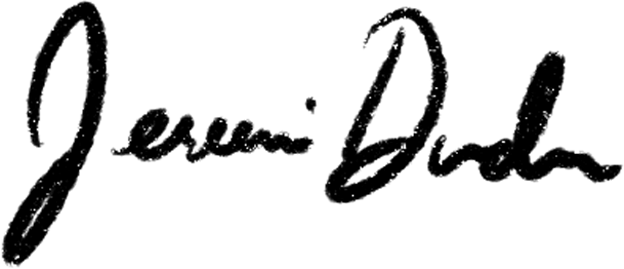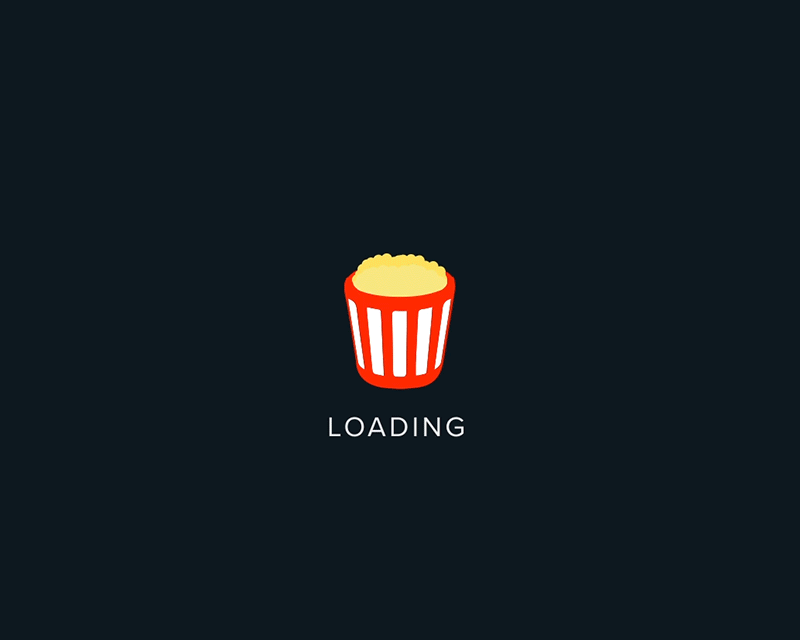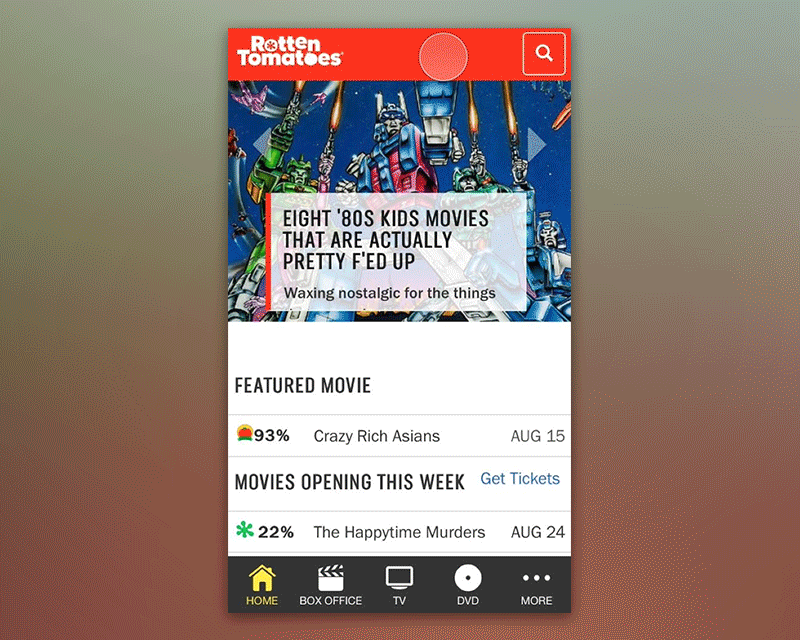User Moderation: Internal Community Management and Pushing Creative Boundaries
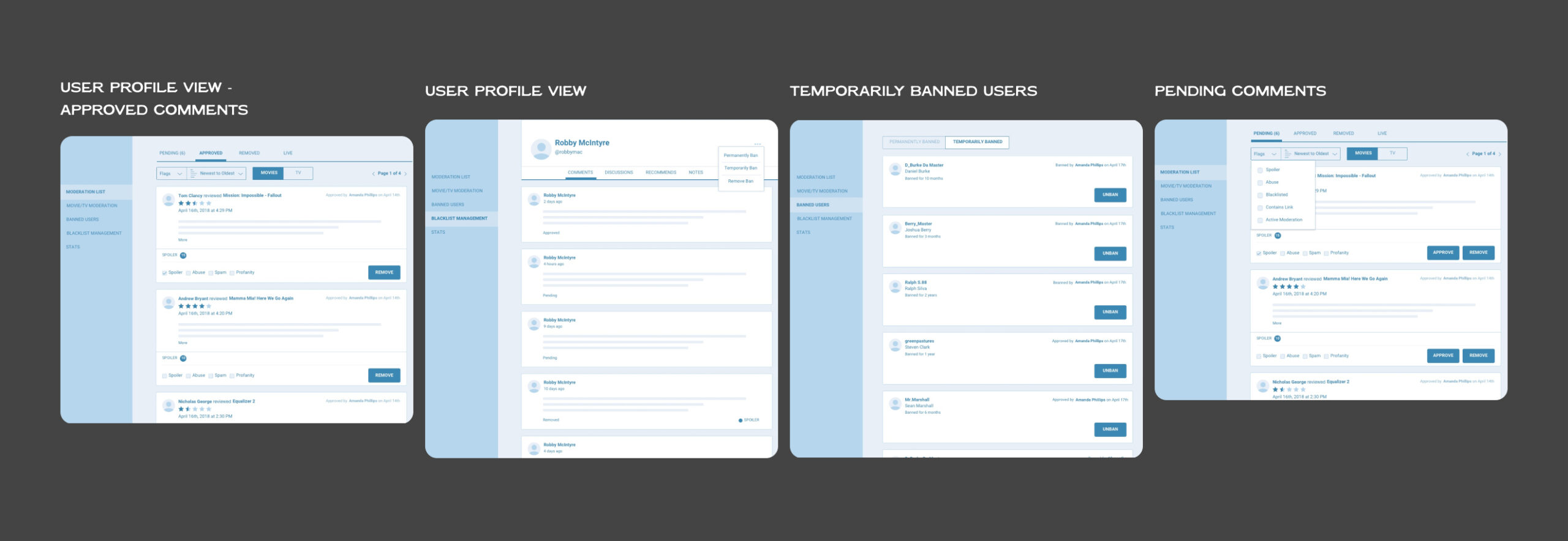
ROTTEN TOMATOES
Rotten Tomatoes falls under the Fandango family, serving as a popular destination for movie and TV show reviews and ratings. It aggregates feedback from both critics and audiences to assign a "Tomatometer" score, helping viewers quickly assess the quality of a film or series. Additionally, the site features trailers, entertainment news, and guides to the latest trends in theaters and on streaming platforms.
During my tenure at Rotten Tomatoes, I was part of a small, dynamic team that collaborated closely on a major rebranding initiative led by Pentagram. My primary responsibility was to consult on UX enhancements for the website, contributing to the development of an internal moderation tool. I worked alongside two visual designers, focusing on creating a more intuitive and engaging user experience.
ROLE
UX Design
RESPONSIBILITIES
UX Architecture
Strategy
Interaction Design
Ideation
Prototyping
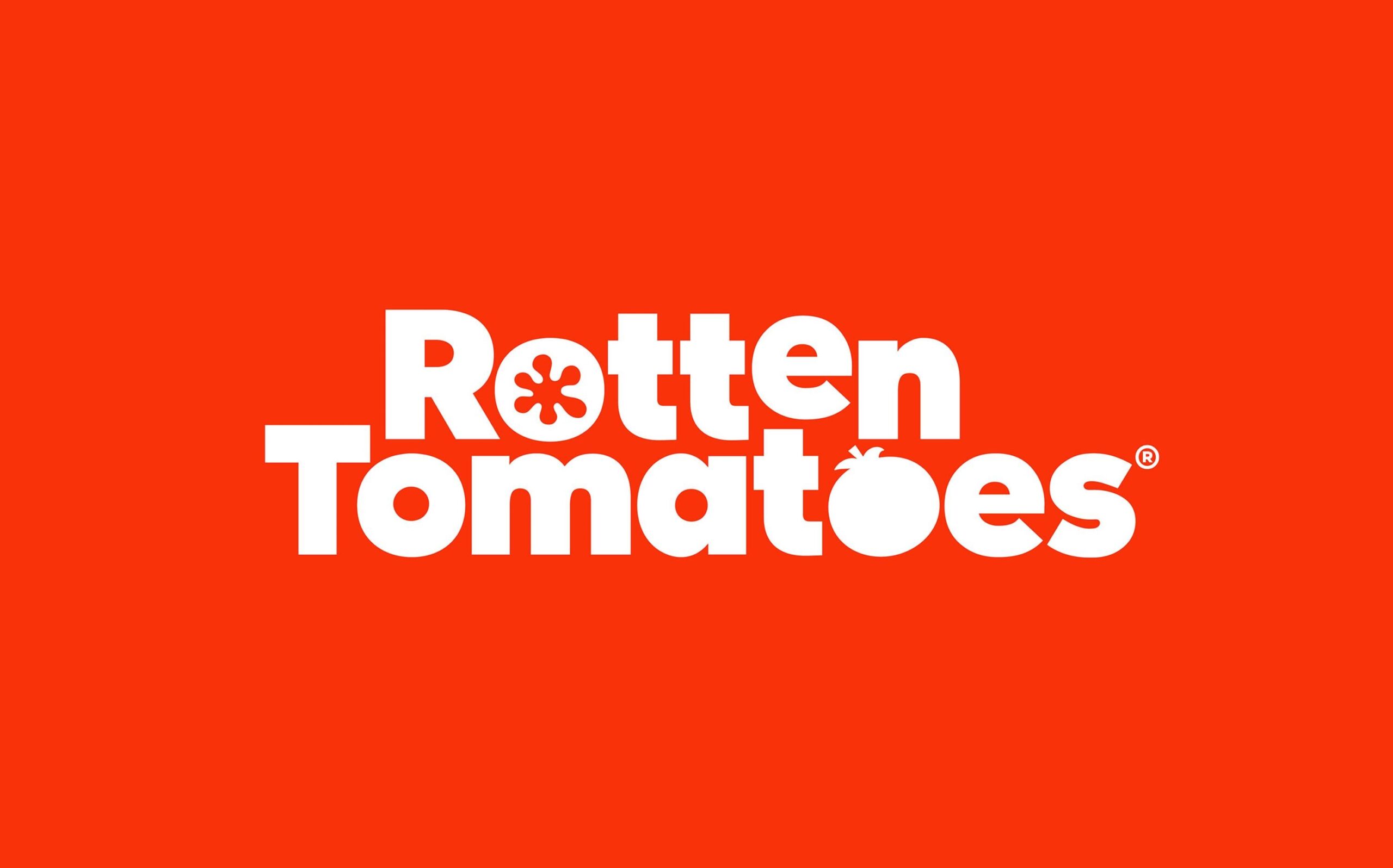
Context
Our content team required a dedicated in-house tool for moderating user comments on the Rotten Tomatoes platform. To address this, I collaborated with subject matter experts from our content team and visual designers to develop Rotten Tomatoes' very first internal moderation tool.
This project also opened up significant opportunities for creative exploration. While the primary goal was to build the moderation tool, I was equally dedicated to enhancing micro-interactions within the platform. Although many ideas were eventually discarded, this exploratory phase allowed us to push the boundaries of what was possible. My role was pivotal in demonstrating to the team the potential for refined micro-interactions and elements that could add a sense of delight to the user experience.
CHALLENGEs
In 2018 our platform was getting a lot of negative feedback from users for not having a diverse group of contributors to write movie reviews. Plus we had a lot of folks who were using the platform in inappropriate ways, posting up offensive material. Building out this internal tool would help to moderate user generated content and help prevent offensive material from continuing to run rampant across our site.
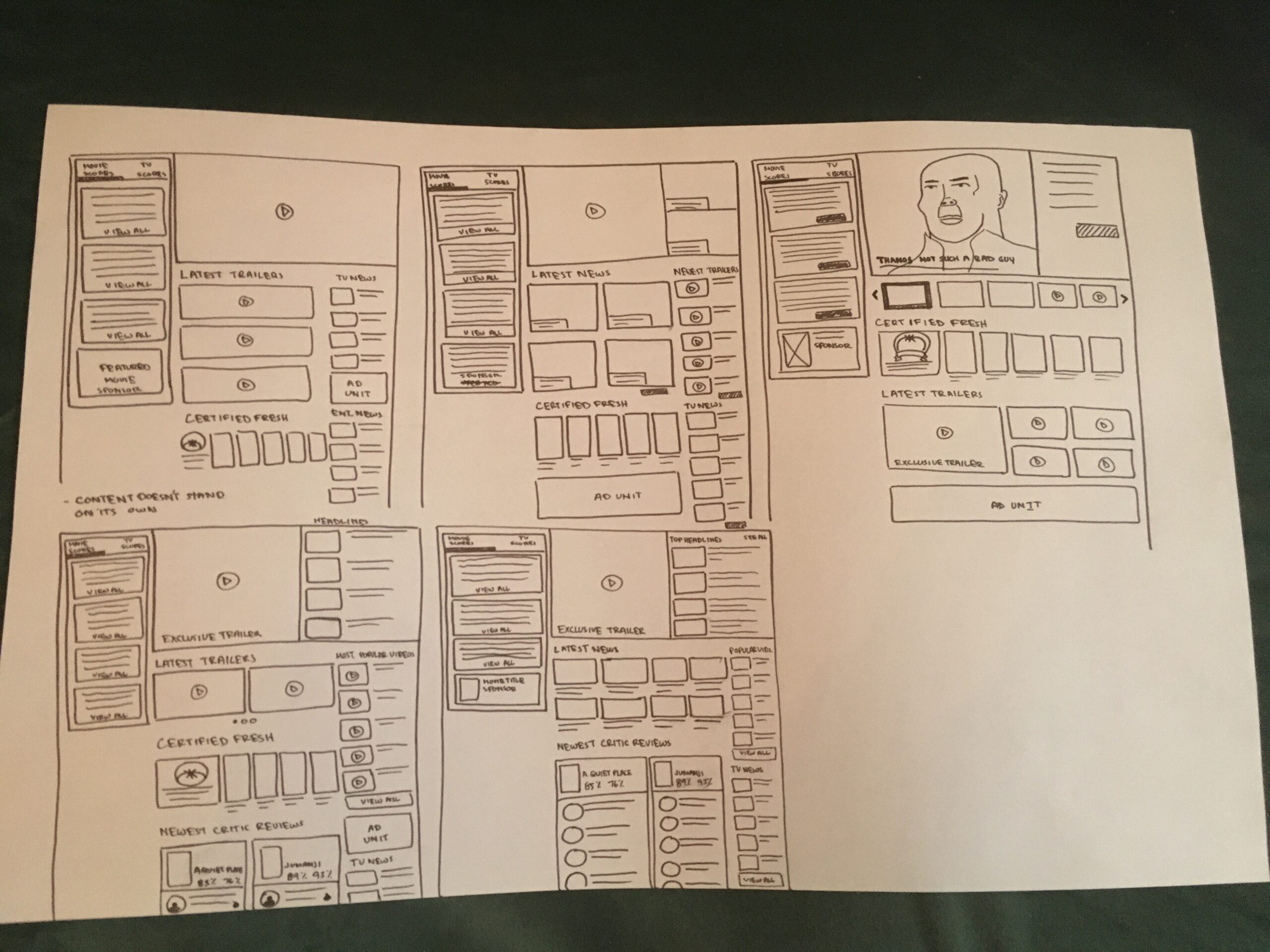
concept development
Rotten Tomatoes made most of its money through ad revenue. I had the opportunity to pitch our team different ways that we could rethink our home hero section, while keeping in mind how we might incorporate the needs of the business.
We found that users were not scrolling through the paginated section at the top, yet our partners from different studios paid for movies to be advertised in these parts of our sites. The goal of these concepts were to help increase engagement around content our users found most interesting.
OUTCOME
After many iterations and revisions, we successfully launched the user moderation tool at Rotten Tomatoes. This tool empowered our content moderators to effectively track and manage user comments across the platform, showcasing the impactful role of thoughtful design. The enthusiastic response from our internal partners highlighted the transformative power of our design efforts.
While many of our initial ideas for micro-interactions did not make it to implementation, the process was refreshing and almost like working in a creative agency. We were constantly pushing towards a visionary "north star," operating within tight deadlines, which fostered a dynamic and creative environment. Simultaneously, we upheld the daily operations necessary to maintain Rotten Tomatoes as a trusted and beloved site for movie enthusiasts. This balance between innovation and operational excellence was crucial in our efforts to enhance user engagement and trust.
